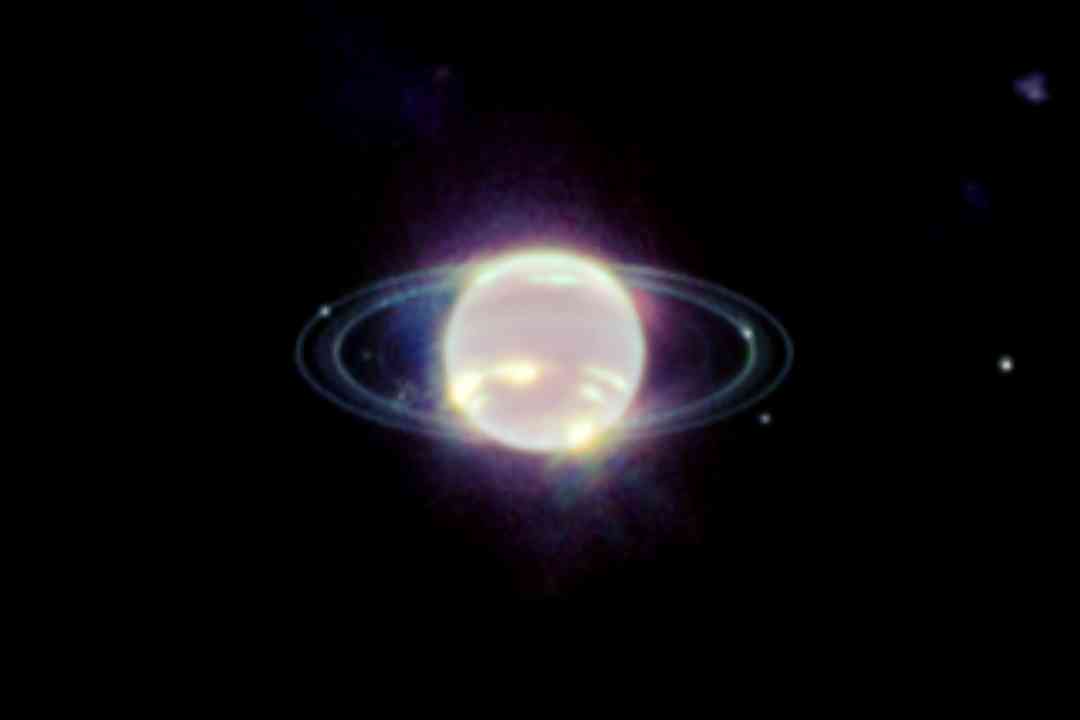NASA’s James Webb Scope Telescope has just amazed the whole world with its first image of Neptune. Not just that, the Webb has captured the clearest view of this distant planet's rings in over 30 years with its cameras revealing the Ice giant in a whole new light. Most striking in Webb’s new images is the sharp view of the planet’s rings – some of which have not been detected since NASA’s Voyager 2 became the first spacecraft to observe Neptune during its flyby in 1989. Additionally, apart from several bright narrow rings, the Webb image clearly shows Neptune’s fainter dust bands too!
Near Infrared Camera (NIRCam) was used by Webb in the range from 0.6 to 5 microns and for that reason, Neptune doesn’t appear blue. The methane gas so strongly absorbs red and infrared light that the planet appears dark at these near-infrared wavelengths, except where high-altitude clouds are present. Such methane-ice clouds are prominent as bright streaks and spots, which reflect sunlight before it is absorbed by methane gas. Images from other observatories, including the Hubble Space Telescope and the W.M. Keck Observatory, have recorded these quickly evolving cloud features over the years. Because of Neptune’s 164-year orbit, its north pole can not be seen in the images, but an earlier-known vortex at the southern pole can be seen in Webb’s view. In yet another first, Webb has disclosed a continual band of high-latitude clouds encircling it.
Seven out of fourteen known Moons of Neptune have been captured by the Webb. Dominating this Webb portrait of Neptune is a very bright spark of light sporting the signature diffraction spikes that can be seen in many of Webb’s images, but it isn't a star. Rather, this is Neptune’s huge and unique moon, Triton. Triton's surface is covered in frozen condensed nitrogen and it reflects about 70 per cent of the sunlight which strikes it.
Neptune was discovered in 1846 and has always made researchers curious to know more about it. It is the farthest planet and is located 30 times farther from the sun than the Earth. Neptune orbits the remote, dark region of the outer solar system. The extreme distance from the sun makes Neptune's afternoon equal to the Earth’s dim twilight.
© Vygr Media Private Limited 2022. All Rights Reserved.
























